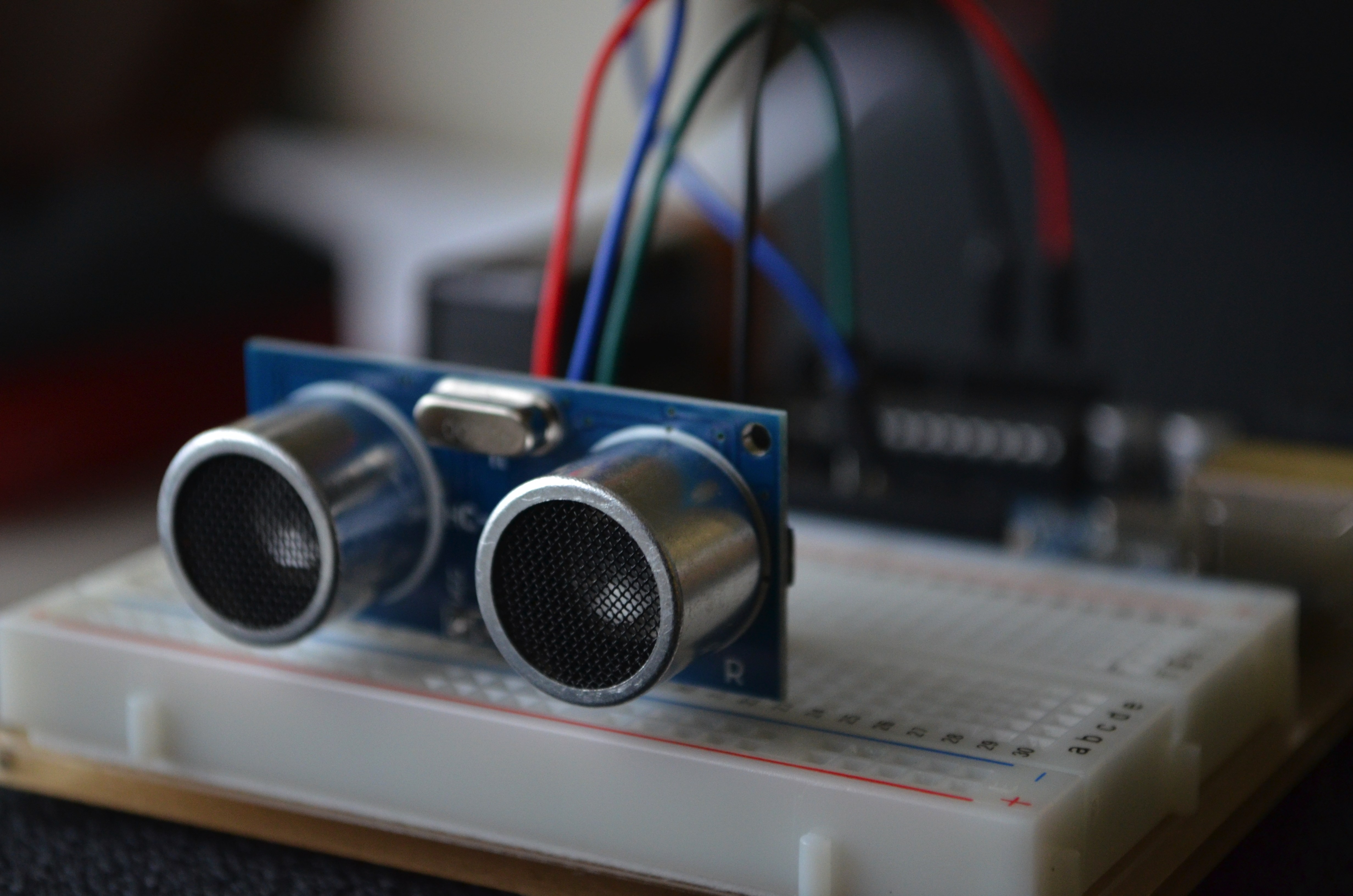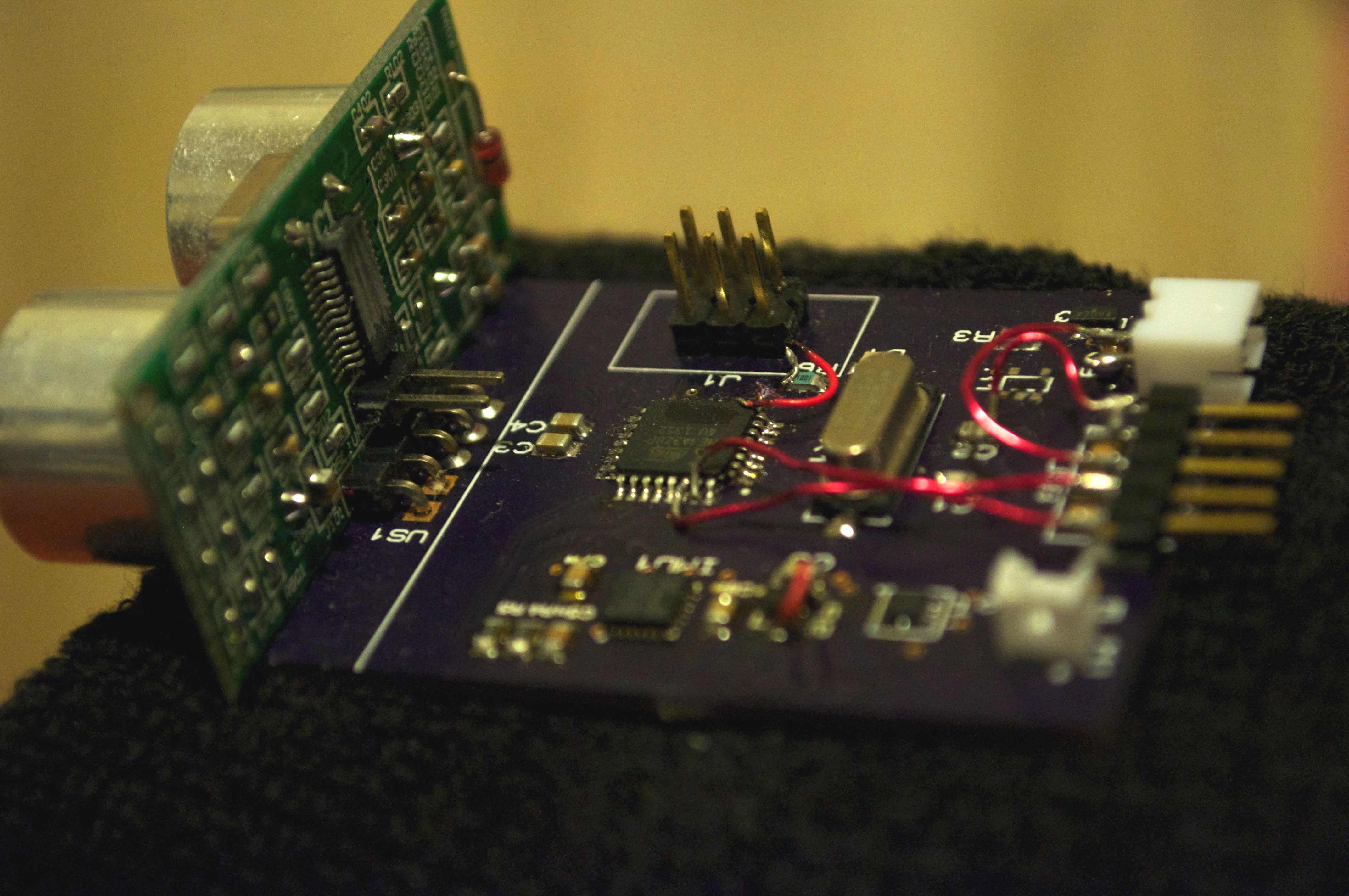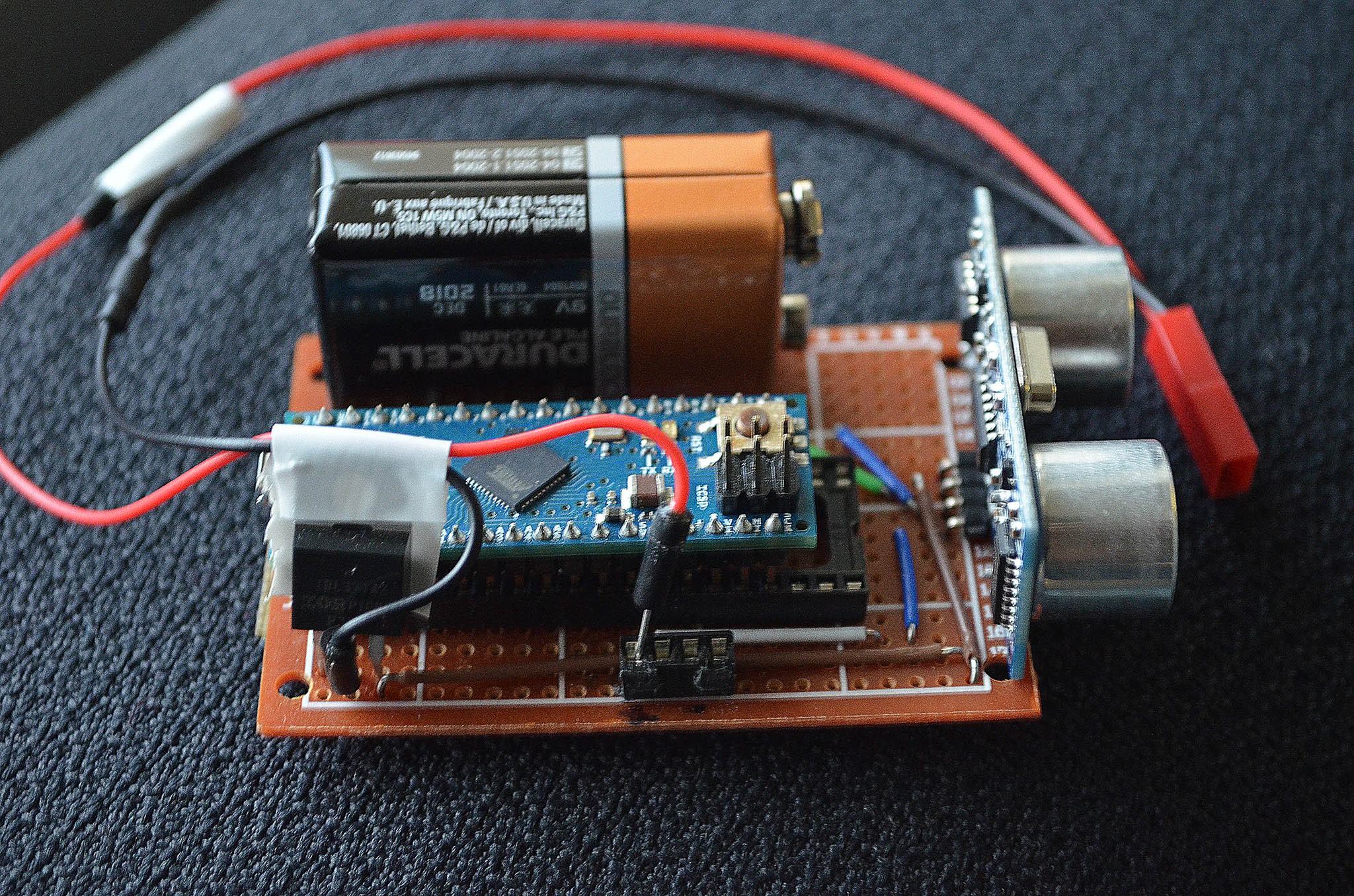Author's Note: This writeup pertains to Pathfinder's "Milestone 1," which is my first really usable prototype that somewhat resembles a consumer device. I'm currently working on Milestone 2, which adds smarter haptic feedback and moves to a fully custom, integrated design. That's what future project logs will be documenting.
Step 1: Getting Distance Data

I began by sourcing the cheapest ultrasonic sensor I could find: the $2 HC-SR04 sensor. It incorporates a transmitter and receiver, operating on 60 kHz sound waves, along with their appropriate drive & timing circuitry into a single module. I then interfaced this sensor with an ATmega328P micro controller, at first through the Arduino platform to make development as simple as possible. In testing this sensor, I measured consistent 0.5cm precision out to a maximum range of 500cm, with a 30º cone of detection. However, accuracy remained off by around 5%. This was due to the impact of ambient temperature on the speed of sound, and so I integrated data from a TMP36 analog temperature sensor to achieve accuracy within 1% of actual values.
Haptic Feedback
I used small, circular motors built for haptic feedback in mobile devices. A motor is placed on the pinky fingertip of the user's non-dominant hand, allowing for good tactile sensitivity while remaining minimally intrusive. To convey intensity, we manipulate the frequency of gentle pulses, whereas most traditional systems vary vibration strength. This is a really delicate process, as having the best sensors and data in the world won't help unless I can actually convey that to the user. My main challenge so far has been resolution: It's fairly easy to tell apart, say, the different quartiles of the systems' range, but we need to do better. First, I asked a focus group of future beta testers to identify the ideal range for an assistive navigational device. Most agreed that 250cm, or just over 8 feet, would be a useful extension over their existing options and that they would see diminishing returns in utility after that point. For my first prototypes, I just used a simple linear scale that changed the delay between haptic pulses. What is a haptic pulse, you ask? Even simpler: A uC pin goes HIGH for roughly 20 milliseconds, driving the gate of an N-channel MOSFET to switch a simple ERM motor. I have big plans for this cobbled-together assembly, however, and I'm now looking at LRA motors + specialized haptic driver ICs.
Bringing It Together
I now had to integrate the system into a single device. I switched to a much smaller controller board and arranged the parts on a prototyping grid, hand soldering the connections with jumper wires. A 9V battery provided a primitive, yet portable power source. This early prototype measured 50x70mm, and weighed 115 grams. The assembly was attached to a utility glove with velcro and tested; users reported much of the obvious: the device was bulky, had poor weight balance, and the loose glove made for poor tactile feedback.
From Prototype to Product

With my basic design vision physically realized, I became significantly more ambitious. Over a two week development sprint, I learned and employed EAGLE CAD to create PCB layouts for my prototype, which enabled me to add features such as an accelerometer/gyroscope, support for lithium-polymer battery packs, and an additional wrist motor for complementary feedback patterns; all while significantly reducing the footprint. I manufactured the 35x55mm board with resources from my school's chemistry lab (cupric chloride etchant, as well as the essential fume hood + personal protection equipment!. The glove too was replaced for a more elastic variant, and the motor was sewn into the fingertip to ensure tactile sensitivity. Overall, the board was 45% smaller and weighed 60% less (45g), while improving functionality.
Iterative Improvement

Mark III has a slight board shrink (30x45mm, 40g) and systems upgrade. The 8-bit 16MHz AVR processor was swapped for a 32-bit 96MHz ARM Cortex-M4 (Paul Stoffregen's Teensy 3.1) to enable advanced processing of the accelerometer/gyroscope data (Kalman filters), bringing gesture recognition to the table. Furthermore, the new chip runs at 3.3V, so I removed the boost converter to improve efficiency and bring nominal power consumption to just 70mA!
Field Trials:
In the end, the glove came together well enough to be tested under typical use conditions. I found that there was a significant learning curve in using the glove for precise, fine motor tasks, but basic large obstacle detection was easy enough for untrained, fully blind users. I asked Ernie, a prominent member at the Santa Clara Valley Center for the Blind, to evaluate the glove by using it to find a chair in an assembly hall. He was able to do so repeatably over 3 trials, enough to demonstrate the basic concept. Unfortunately, my time with the center was quite limited, and I spent most of the time during my three visits just talking to the members, trying to develop an understanding of their needs and constraints. On my own, I was able to perform more scientific trials, and so I designed a repeatable gauntlet of tests that I or other sighted users could perform while blindfolded to demonstrate typical use of the device. The tests are as follows:
1.Picking up a glass of water on a table (90cm wide), placed randomly between 20 and 80 centimeters away from the user. Spills constitute failure.
2.Find a person in an open area, with no initial orientation. Hitting walls or accidentally running into the person constitutes failure.
3.Navigate around randomly placed obstacles in a room. Contact constitutes failure.
I was able to pass all three tests after getting used to the device, and used the trials as my benchmark for any platform changes.
Step 5: Looking to the future!

A shot of Milestone 2. Notice the hacked-on serial connector for debugging. Always include every header!
The system is now almost fully integrated, with a standalone microcontroller and even Qi wireless charging support! Our final board shrink brings dimensions to 30x40mm and weight to 33g. The final BOM comes to $19.77, and the design files are ready for production.
